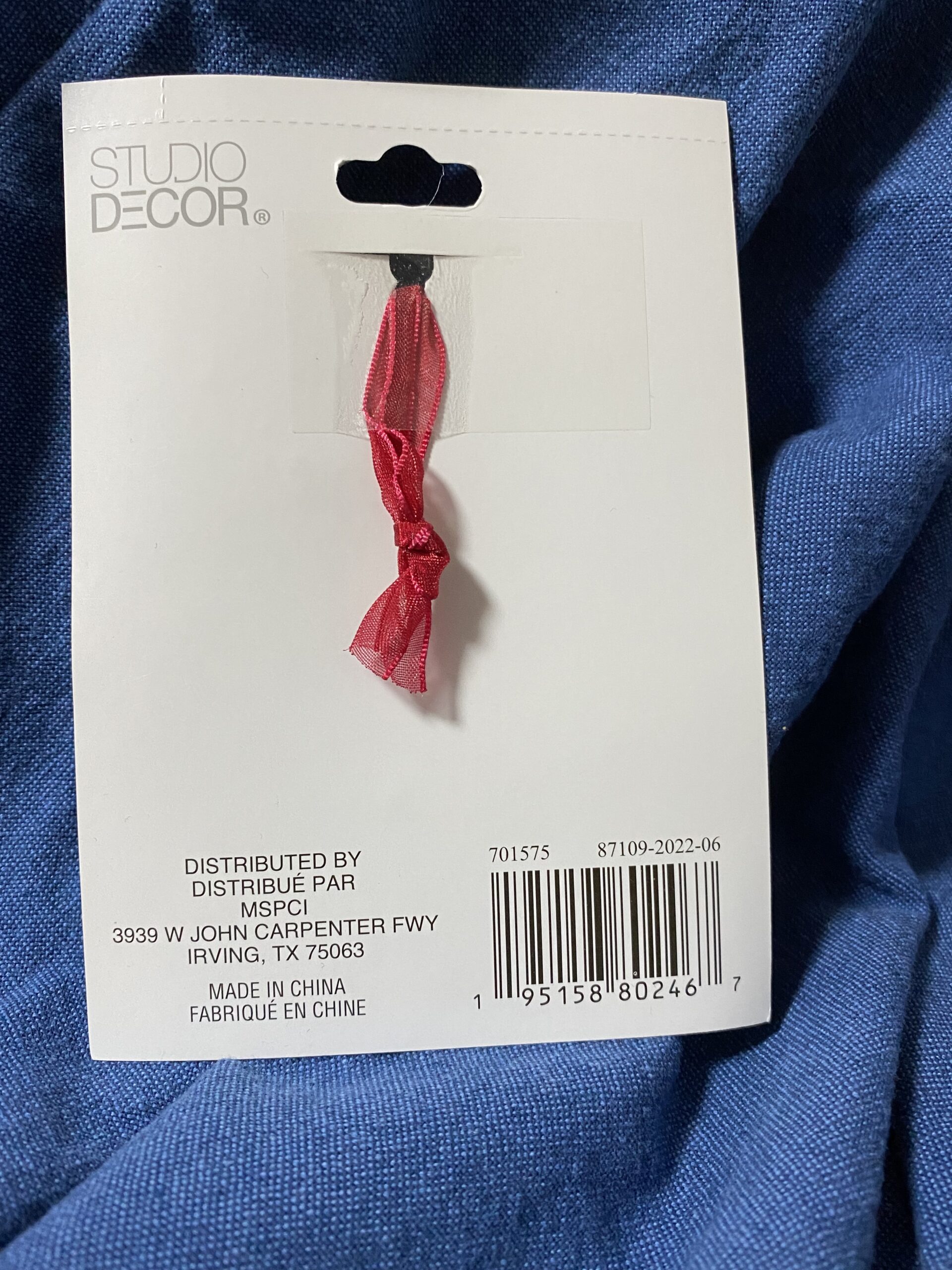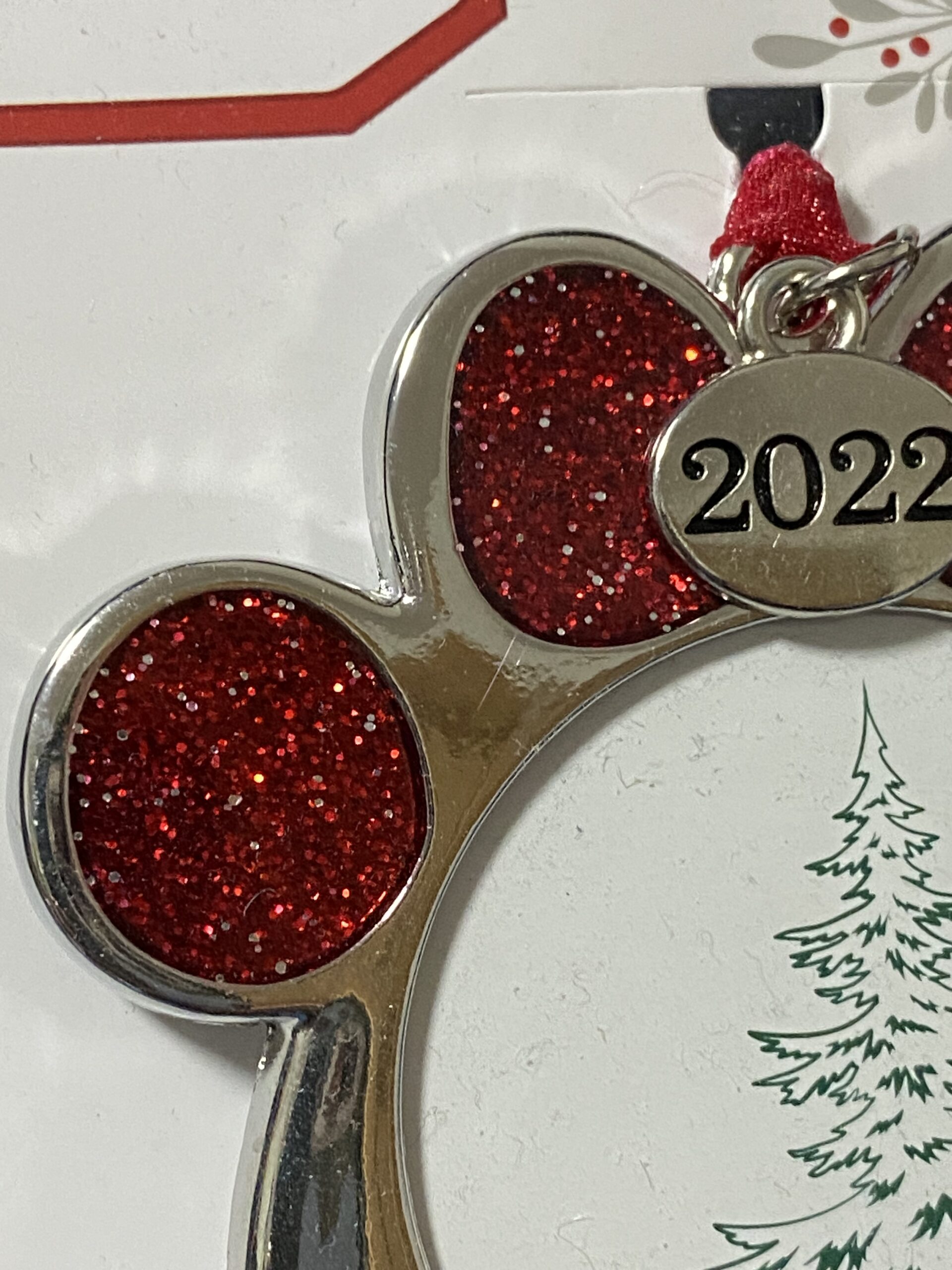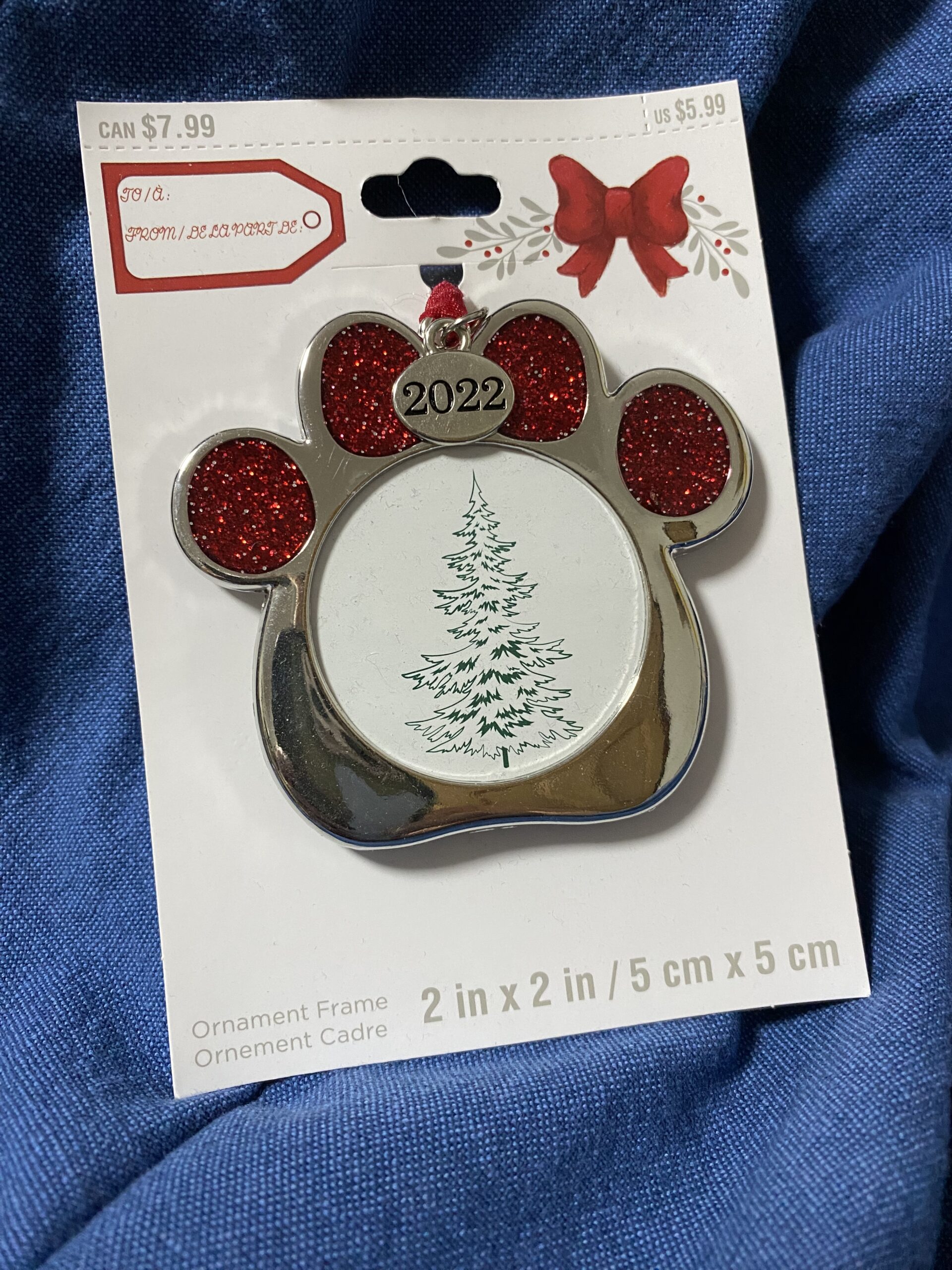2022 Michael’s Paw Print Christmas Ornament Frame: Positive for Mercury and a significant amount of Arsenic in the red sparkles!
For those new to this website:
Tamara Rubin is a multiple-federal-award-winning independent advocate for childhood Lead poisoning prevention and consumer goods safety, and a documentary filmmaker. She is also a mother of Lead-poisoned children (two of her sons were acutely Lead-poisoned in 2005). Since 2009, Tamara has been using XRF technology (a scientific method used by the U.S. Consumer Product Safety Commission) to test consumer goods for toxicants (specifically heavy metals — including Lead, Cadmium, Mercury, Antimony, and Arsenic). All test results reported on this website are science-based, accurate, and replicable. Items are tested multiple times to confirm the test results for each component tested. Tamara’s work was featured in Consumer Reports Magazine in February of 2023 (March 2023 print edition).
April 19, 2023 — Wednesday
Christmas in April? Just catching up on some testing in my office that has been pending for a while! Please let me know if you have questions.
XRF Test Results for the 2022 Michael’s Store Paw Print Christmas ornament frame pictured here — each component was tested multiple times to confirm the results:
Metals noted below in RED are concerning (and generally considered toxic/unsafe/poisonous to humans).
Metals noted below in BLUE are not considered harmful in most applications.
Metals noted below in GREEN are considered harmful in some applications.
Component #1) Black backing of picture frame
- Lead (Pb): non-detect
- Cadmium (Cd): non-detect
- Tin (Sn): 72 +/- 19 ppm
- Mercury (Hg): non-detect
- Selenium (Se): non-detect
- Barium (Ba): non-detect
- Arsenic (As): non-detect
- Chromium (Cr): non-detect
- Antimony (Sb): non-detect
- Zinc (Zn): 49 +/- 9 ppm
- Iron (Fe): 1,820 +/- 67 ppm
- Bismuth (Bi): 12 +/- 5 ppm
- No other metals were detected in consumer goods mode.
Component #2 ) Metal screws on back of frame
- Lead (Pb): non-detect
- Cadmium (Cd): non-detect
- Tin (Sn): 73 +/- 14 ppm
- Mercury (Hg): non-detect
- Selenium (Se): 659 +/- 27 ppm
- Barium (Ba): 158 +/- 81
- Arsenic (As): 90 +/- 7 ppm
- Chromium (Cr): 87 +/- 34 ppm
- Antimony (Sb): non-detect
- Nickel (Ni): 7,111 +/- 151 ppm
- Copper (Cu): 24,900 +/- 400 ppm
- Zinc (Zn): 16,700 +/- 300 ppm
- Bromine (Br): 78 +/- 11 ppm
- Iron (Fe): 59,800 +/- 800 ppm
- Bismuth (Bi): 27 +/- 9 ppm
- No other metals were detected in consumer goods mode.
Component #3) Silver metal tested from back of frame
- Lead (Pb): non-detect
- Cadmium (Cd): non-detect
- Tin (Sn): 903 +/- 104 ppm
- Mercury (Hg): non-detect
- Selenium (Se): non-detect
- Barium (Ba): non-detect
- Arsenic (As): non-detect
- Chromium (Cr): non-detect
- Antimony (Sb): non-detect
- Copper (Cu): 563,000 +/- 2,200 ppm
- Zinc (Zn): 434,200 +/- 2,100 ppm
- Manganese (Mn): 243 +/- 148 ppm
- Bromine (Br): 134 +/- 27 ppm
- Iron (Fe): non-detect
- Bismuth (Bi): 1,099 +/- 110 ppm
- No other metals were detected in consumer goods mode.
Component #4) 2022 charm dangle
- Lead (Pb): non-detect
- Cadmium (Cd): non-detect
- Tin (Sn): 3,337 +/- 174 ppm
- Mercury (Hg): non-detect
- Selenium (Se): non-detect
- Barium (Ba): non-detect
- Arsenic (As): non-detect
- Chromium (Cr): non-detect
- Antimony (Sb): non-detect
- Copper (Cu): 608,900 +/- 2,000 ppm
- Zinc (Zn): 385,300 +/- 1,900 ppm
- Manganese (Mn): non-detect
- Bromine (Br): 136 +/- 25 ppm
- Iron (Fe): non-detect
- Bismuth (Bi): 1,560 +/- 92 ppm
- No other metals were detected in consumer goods mode.
Component #5) Red sparkles on paw print
- Lead (Pb): non-detect
- Cadmium (Cd): non-detect
- Tin (Sn): 173 +/- 24 ppm
- Mercury (Hg): 174 +/- 106 ppm
- Selenium (Se): 2,870 +/- 106 ppm
- Barium (Ba): non-detect
- Arsenic (As): 420 +/- 18 ppm
- Chromium (Cr): non-detect
- Antimony (Sb): non-detect
- Nickel (Ni): non-detect
- Copper (Cu): 110,500 +/- 2,700 ppm
- Zinc (Zn): 30,600 +/- 800 ppm
- Bromine (Br): 178 +/- 32 ppm
- Iron (Fe): non-detect
- Bismuth (Bi): 132 +/- 16 ppm
- No other metals were detected in consumer goods mode.
Component #6) Silver metal tested from front of ornament
- Lead (Pb): non-detect
- Cadmium (Cd): non-detect
- Tin (Sn): 896 +/- 96 ppm
- Mercury (Hg): non-detect
- Selenium (Se): non-detect
- Barium (Ba): non-detect
- Arsenic (As): non-detect
- Chromium (Cr): non-detect
- Antimony (Sb): non-detect
- Copper (Cu): 824,300 +/- 1,500 ppm
- Zinc (Zn): 172,700 +/- 1,300 ppm
- Manganese (Mn): non-detect
- Bromine (Br): 54 +/- 21 ppm
- Iron (Fe): non-detect
- Bismuth (Bi): 1,123 +/- 69 ppm
- No other metals were detected in consumer goods mode.
Component #7) Clear part of cover over tree image (picture insert)
- Lead (Pb): non-detect
- Cadmium (Cd): non-detect
- Tin (Sn): 69 +/- 9 ppm
- Mercury (Hg): non-detect
- Selenium (Se): non-detect
- Barium (Ba): 79 +/- 43 ppm
- Arsenic (As): non-detect
- Chromium (Cr): non-detect
- Antimony (Sb): non-detect
- Zinc (Zn): 40 +/- 14 ppm
- Iron (Fe): non-detect
- Bismuth (Bi): non-detect
- Chlorine (Cl): 360,000 ppm
- No other metals were detected in consumer goods mode.
In Conclusion
This set of test results brings up two thoughts/ considerations:
- Ornaments are not toys. They are not sold as toys, and they are not regulated as toys. As such, they should not be given to children to play with.
- Sparkles/ glitter not sold for use by children (not marketed as an item intended for use by children) can have unsafe levels of various heavy metals — in this case, both Arsenic and Mercury.
I do not have any particular concern for this specific object poisoning the user because, with the intended use of the object, the toxic components are not likely to be mouthed/ chewed by a child, and the glitter is bound in a plastic substrate (kind of like a plastic enamel of sorts). The test results for the glitter component of this ornament do put a spotlight on the ongoing concern for items that might have loose glitter (the kind of item that leaves a trail of glitter behind wherever it goes, I am certain most parents are familiar with these items!) and the concern for any glitter (or any product with glitter in the decorative elements) that is not expressly marketed for use by children.
That said, any newly manufactured (post-2012) item with glitter that has been sold by a brand name retailer (for example, Target or Walmart) and was expressly marketed for use by children, *should* be free of metallic toxicants (Lead, Mercury, Cadmium, Arsenic, etc.). Of course, there can be exceptions to this. Given the potential range of toxicity concerns with glitter, not to mention the separate environmental impacts of loose plastic glitter, I stopped using conventional glitter with my children years ago.
We recently (last year, summer 2022) discovered biodegradable plant-based glitter we can use for the children’s face painting at festivals (as an expensive, but fun alternative). However, I do try limiting the glitter allowed in our home to glitter-nail-polish only (so the glitter is bound in a substance/ gel/ resin and cannot get all over the house). Since I can anticipate your next question: I have also never tested any nail polish that was positive for Lead, although I am very aware of other toxicity concerns for nail polish and so we significantly limit the use of nail polish in our home (our boys are scent-sensitive too, so that dictates a lot of what we can and cannot have at home).
Some additional reading that may be of interest
- The Lead Safe Mama Christmas overview article
- The “Christmas Ornament” category of articles on this website
- The “Michael’s” category of articles on this website
- The “Picture Frame” category of articles on this website
- Our article explaining the testing we do here
- Our article discussing the business model for Lead Safe Mama, LLC
- Ways you can contribute in support of this work


Never Miss an Important Article Again!
Join our Email List









